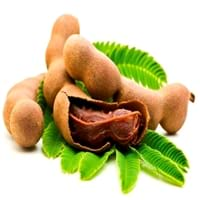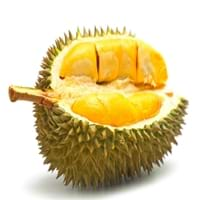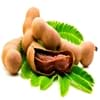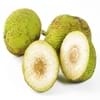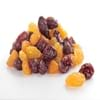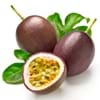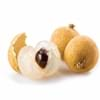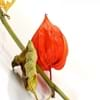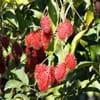Health Benefits
Boosts immune system, Boosts respiratory health, Cancer prevention, Digestive aid, Piles treatment
Anti depressant, Boosts immune system, Cancer prevention, Heart care, Reduces stress
General Benefits
Beneficial in improving nerve function, Protects against parasites and worms, Relieves pain
Anti oxidant properties, Anti-inflammatory properties, Boosts immune system, Controls blood pressure, Controls blood sugar levels, Digestive aid, Flu treatment, Strengthens bones
Skin Benefits
Anti-aging benefits, Brightens and lightens complexion, Exfoliates skin, Hydrates skin, Treatment of dark spots
Anti-aging benefits, Brightens and lightens complexion
Hair Benefits
Prevents hair loss
Promotes longer and healthier hair, Protects hair
Allergy Symptoms
Abdominal pains, Breathing difficulty, Dizziness, Eczema, Fainting, Hives, Itching, Nasal congestion, Swelling of face, Tingling sensation in mouth, Vomiting
Diarrhea, Headaches, Hives, Nasal congestion, Red rash, Runny nose, Vomiting
Side Effects
Decrease in blood sugar levels, Induces acid reflux, Allergic reaction, Tooth decay, May form gallstones
Affects blood glucose levels, Nausea, Stomach pain
Best Time to Eat
Along with meal, As a snack in the late afternoon, Don't consume at night and before bed, Strictly avoid empty stomach
Along with meal, As a snack in the late afternoon, Don't consume at night and before bed, Morning time (before lunch)
Vitamin B5 (Pantothenic Acid)
Vitamin C (Ascorbic Acid)
Vitamin E (Tocopherole)
Not Available
Vitamin K (Phyllochinone)
Not Available
Lutein+Zeaxanthin
Not Available
Phytosterol
Not Available
Calories in Fresh Fruit with Peel
Not Available
Not Available
Calories in Fresh Fruit without Peel
Calories in Canned Form
Not Available
Not Available
Calories in Pie
Not Available
Type
Tropical
Tree fruit, Tropical
Season
Spring, Summer
Monsoon
Varieties
PKM 1, Urigam, Hasanur, Tumkur prathisthan, DTS 1 and Yogeshwari
D24, D99 (Gob kecil), D123 (Chanee), D145 (Beserah), D158 (Gan Yau), D159 (Monthong), D169 (Tok Litok), D188, D189, D190, D163 (Hor Lor) and D164 (Ang Bak)
Color
Brown, Reddish-brown
Green
Inside Color
Brown
Yellow
Shape
Curving Cylinder
Oval
Taste
Sour-Sweet
Creamy, Sweet
Origin
Africa
South-Eastern Asia
Grows on
Trees
Not Available
Soil Type
Loam, Sandy, Sandy loam, Well-drained
Clay
Climatic Conditions
Humid to dry, Rainfall, Warm to hot climate
Hot, Humid
Facts about
- Tamarind is used to prevent body odor.
- African children use the tamarind seeds in games.
- No cases of tamarind toxicity or allergy reported till date.
- 1 kg of durian contains 1350 calories which may cause weight gain.
- It may have a hyperthermic effect on the body, making you feel warmer.
- Study shows that durian has an ability to reduce infertility in men & women.
Top Producer
India
Thailand
Other Countries
Africa, Australia, Brazil, China, Mexico, Nigeria, Sudan, Taiwan
Indonesia, Malaysia, Philippines
Top Importer
United States of America
China
Top Exporter
Thailand
Thailand
Botanical Name
Tamarindus indica
Durio zibethinus
Synonym
Tamarindo, tamarindus
Lahia Hassk
Subkingdom
Tracheobionta
Tracheobionta
Division
Magnoliophyta
Magnoliophyta
Class
Liliopsida
Magnoliopsida
Subclass
Rosidae
Dillenhidae
Family
Fabaceae
Malvaceae
Species
Tamarindus indica
D. zibethinus
Generic Group
Tamarind Sub
Not Available
Difference Between Tamarind and Durian
We might think that Tamarind and Durian are similar with respect to nutritional value and health benefits. But the nutrient content of both fruits is different. Tamarind and Durian Facts such as their taste, shape, color, and size are also distinct. The difference between Tamarind and Durian is explained here.
The amount of calories in 100 gm of fresh Tamarind and Durian with peel is Not Available and Not Available and the amount of calories without peel is 239.00 kcal and 147.00 kcal respectively. Thus, Tamarind and Durian belong to High Calorie Fruits and High Calorie Fruits category.These fruits might or might not differ with respect to their scientific classification. The order of Tamarind and Durian is Fabales and Malvales respectively. Tamarind belongs to Fabaceae family and Durian belongs to Malvaceae family. Tamarind belongs to Tamarindus genus of Tamarindus indica species and Durian belongs to Durio genus of D. zibethinus species. Beings plants, both fruits belong to Plantae Kingdom.
